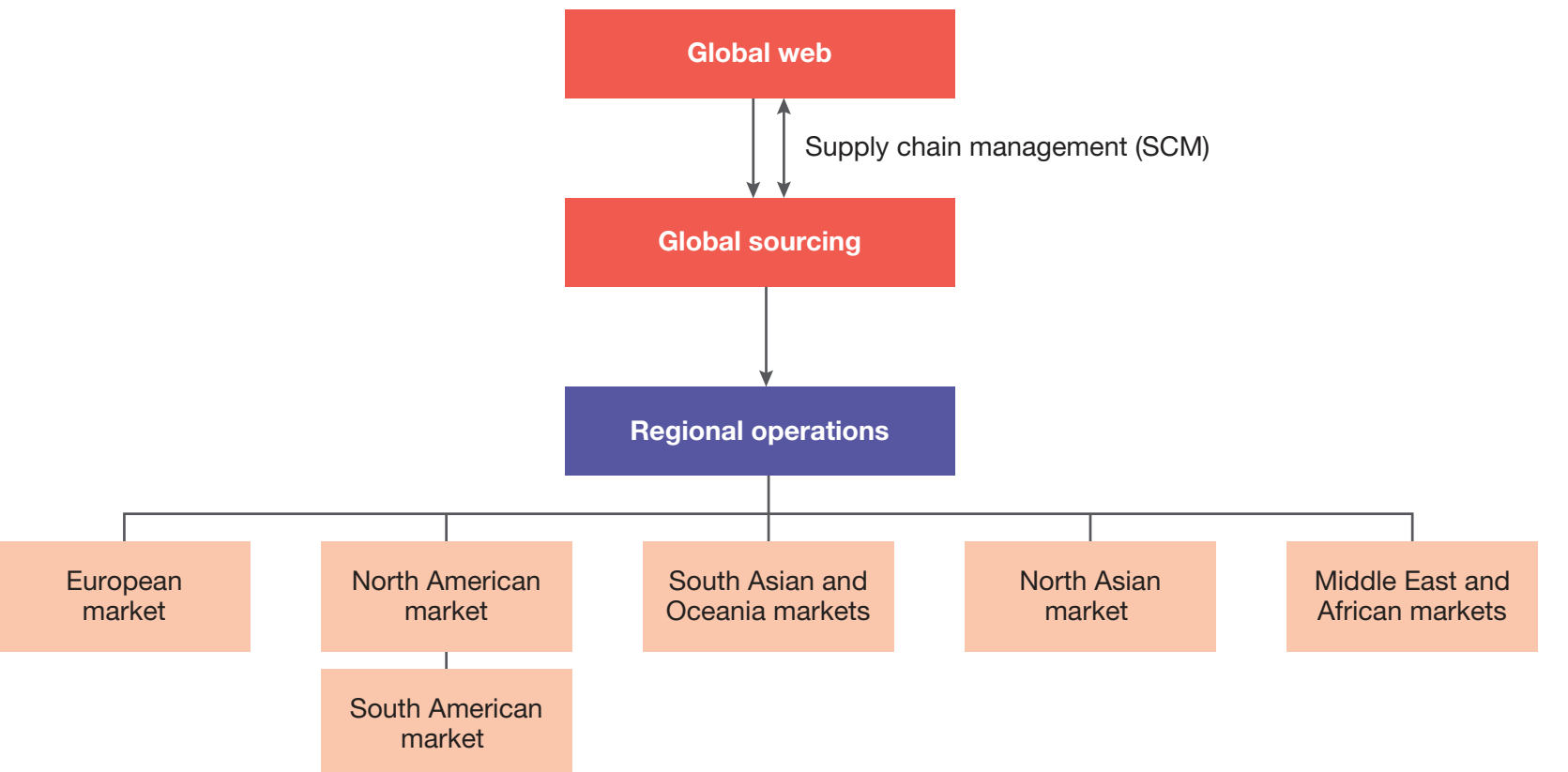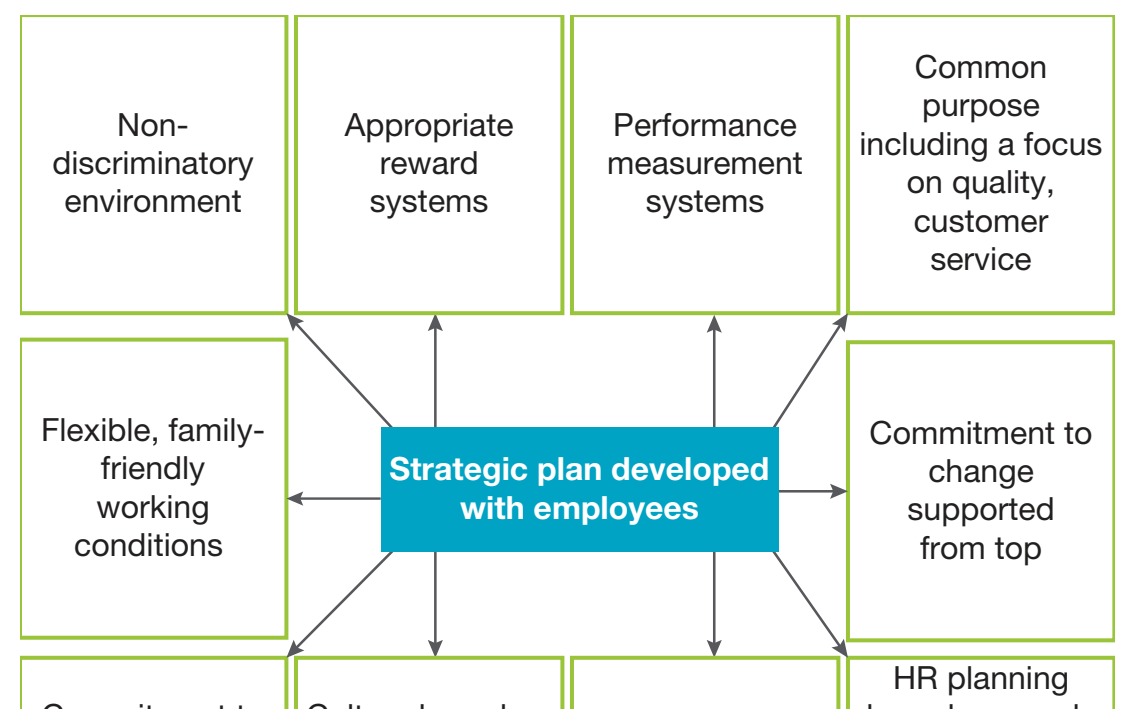Photo AI
Last Updated Sep 24, 2025
Market Environment Simplified Revision Notes for NSC Business Studies
Revision notes with simplified explanations to understand Market Environment quickly and effectively.
499+ students studying
Market Environment
Introduction to the Market Environment
Definition and Importance
Market Environment: The external framework within which businesses operate. It includes all external factors that influence a company's performance in its market.
- Influences:
- Guides business strategies.
- Defines operational limits.
- Impacts potential success.
Definition: Market Environment – The external framework within which businesses operate.
Overview of Key Components
- Consumers: Drive demand and influence market trends.
- Suppliers: Control the supply of goods and materials.
- Intermediaries: Assist in distribution and sales.
- Competitors: Offer alternative options for consumers.
- Other Organisations: Regulate and oversee market operations.
| Component | Role |
|---|---|
| Consumers | Drive demand and influence market trends. |
| Suppliers | Control the supply of goods and materials. |
| Intermediaries | Assist in distribution and sales. |
| Competitors | Offer alternative options for consumers. |
| Other Organisations | Regulate and oversee market operations. |
Limited Control Over Components
Businesses have limited influence over these elements.
- Examples of External Influence:
- Economic downturns may curb consumer spending.
- New regulations might change business operations.
The Market (Consumers/Customers)
-
Consumer Behaviour:
- Technology such as mobile apps and social media majorly influences consumer behaviour.
- Impulse purchases frequently occur due to app notifications and social media promotions.
-
Market Types:
- B2B (Business-to-Business): Transactions between companies, like Boeing selling aircraft to airlines.
- B2C (Business-to-Consumer): Direct sales to individual consumers, such as Amazon's online platform.
| Factor | B2B | B2C |
|---|---|---|
| Volume | Bulk purchases | Single-unit purchases |
| Relationship | Long-term | Short-term |
-
Digital Marketing:
- Personalisation techniques like Amazon's recommendations improve customer engagement.
- Amazonexperienced sales growth through these recommendations.
-
COVID-19 Case Study:
- Consumer behaviour saw significant shifts during the pandemic, with increased reliance on online shopping.

- This diagram reflects changing preferences, indicating a move towards digital platforms.
Suppliers
- Supplier Relationships:
- Strong connections with suppliers ensure product quality and timely delivery.
- JIT (Just In Time): Reduces inventory costs by aligning supply with demand.
- ERP (Enterprise Resource Planning): Enhances efficiency by integrating business processes.
Definitions:
- JIT: Accepting goods only when necessary for production.
- ERP: Software that connects core business functions.
- Successful Engagement Strategies:
- Apple's strategic alliances significantly lower supply chain costs and boost resilience.

Intermediaries
-
Functions and Roles:
- Distributors: Link suppliers with buyers, often managing logistics.
- Retailers: Sell directly to customers, adapting quickly to consumer needs.
-
E-commerce Influence:
- Alters traditional intermediary roles by facilitating direct consumer engagement.
-
Omnichannel Strategies:
- Walmart's "click-and-collect" service demonstrates effective omnichannel strategy, enhancing stock availability and customer satisfaction.

Competitors
-
Types of Competition:
- Direct: Competing within the same niche, like Coca-Cola vs. Pepsi.
- Indirect: Providing alternatives, e.g., taxis vs. Uber.
-
Analytical Tools and Strategic Responses:
- Companies utilise SWOT Analysis to capitalise on strengths and mitigate weaknesses.
- PESTLE Analysis examines external factors impacting business.
- Porter's Five Forces evaluates industry competition and pressure levels.
Example: A company applies SWOT to enhance strengths and reduce weaknesses, shaping its strategy.

Other Organisations/Civil Society
-
Roles and Collaboration Opportunities:
- NGOs and regulators promote ethical practices, influencing business conduct.
- Example: McDonald's collaborates with the WWF for sustainable beef production.
-
Example Partnerships:
- Highlight successful collaborations that not only enhance business but also contribute to society.
-
CSR Initiatives Case Study:
- Coca-Cola's water sustainability projects exemplify impactful corporate social responsibility.
Opportunities and Threats
Key Concepts
Definitions
- Opportunity: A favourable circumstance within the market that a business can exploit for competitive advantage.
- Threat: A negative condition or challenge that can impede business performance.
Significance
- Identifying opportunities and threats is essential for strategic planning.
- Essential for business growth through aligning strategy with market conditions.
SWOT Analysis
-
Definition and Purpose:
- SWOT stands for Strengths, Weaknesses, Opportunities, and Threats.
- A strategic tool assessing internal and external factors.
- It evaluates how strengths and weaknesses correspond to opportunities and threats.
-
Clarification:
- Strengths: Internal factors that provide an edge.
- Weaknesses: Internal factors that may hinder success.
- Opportunities: External factors that can be beneficial.
- Threats: External factors that could pose challenges to the business.
Identifying Market Opportunities
Emerging Technologies
- Technological Innovations: Opportunities for market growth using technologies like:
- Artificial Intelligence (AI)
- Internet of Things (IoT)
- Blockchain
- Example: A healthcare company leverages AI to enhance diagnostics and treatment plans. This improves diagnostic accuracy by 25%.
Market Expansion
- Globalisation and Digital Platforms:
- Opportunities arise via social media and worldwide outreach.
- Example: Businesses grow customer bases through targeted online advertising.
Identifying Market Threats
Regulatory Changes
- Impact of New Laws:
- Environmental regulations affecting production processes.
- Real-World Example: The European Union's GDPR impacts data privacy protocols, requiring businesses to adapt using data encryption methods.
Increased Competition
- Market Dynamics:
- New market entrants elevate competition.
- Example: Ride-sharing apps transform the transportation industry by reducing consumer costs and enhancing convenience.
Strategies to Address Opportunities and Threats
Strategic Adaptations
- Innovative Responses:
- Innovation: Creation of new products/services.
- Market Development: Entering novel markets or segments.
- Diversification: Expanding product lines or market reach.
- For Example: A tech company pursues both horizontal and vertical diversification to broaden business reach.
Case Study - Leveraging Opportunities
A business capitalises on an IoT breakthrough:
- Implements smart solutions to capture market share.
- Achieves revenue growth and expanded customer base through innovations like smart lighting and energy management systems.
Mitigating Threats
- Risk Management Techniques:
- Comprehensive risk assessments.
- Developing contingency plans to address unforeseen challenges.
Visual Tools
SWOT Flowchart
- A flowchart illustrates integrating opportunities and threats from SWOT analysis into strategic planning.

Real-World Example
- Case Study: A company facing regulatory challenges adapts by investing in sustainable technology:
- Conducts a SWOT analysis to realign its strategy.
- Adopts eco-friendly practices to adhere to new laws.
- Achieves compliance and gains market recognition for its commitment to sustainability.
- Steps:
- Conducted risk assessment through SWOT.
- Embraced green technologies to reduce the carbon footprint.
- Enhanced public relations via sustainable initiatives.
Strategic Engagement
Purpose and Benefits
Strategic Engagement offers numerous advantages that encourage businesses to actively shape their market environments:
- Competitive Advantage: Businesses identify a niche to distinguish themselves from competitors.
- Example: Develop unique products without competition.
- Supplier Relationships: Strengthened through strategic agreements, improving terms.
- Example: Securing early access to innovative materials.
- Regulatory Navigation: Evades potential issues and explores new possibilities.
- Example: Obtaining necessary certifications for compliance.
Forming Strategic Alliances
Strategic Alliances: Partnerships between businesses aiming for shared objectives, crucial for maximising resources.
- Examples:
- Collaborating with suppliers for improved supply chain efficiency.
- Partnering with regulatory entities to facilitate compliance processes.
Case Study: The alliance between Starbucks and PepsiCo produced $1 billion in annual sales by extending the global reach of their coffee products.

Engaging with Community and NGOs
Community Engagement: Involves businesses engaging with communities to enhance market presence.
- Benefits:
- Positive Social Outcomes: Improves the corporate image through community involvement.
- Example: Sponsoring community events or initiatives that align with brand values.
Example: Coca-Cola's collaboration with WWF led to significant conservation efforts, advancing industry sustainability standards.

Navigating Regulatory Bodies
Regulatory Engagement: Involves understanding and actively participating in regulatory processes.
- Techniques:
- Advocacy for tax incentives or deregulation policies.
- Adjusting compliance methods to align with regulatory changes.
Case Study: Uber's strategic advocacy enhanced its operations in regions with complex regulatory landscapes.

Real-World Examples and Case Studies
- Starbucks & PepsiCo: Improved brand visibility and increased product access.
- Coca-Cola & WWF: Pioneering conservation initiatives that set new industry benchmarks.
- Uber: Managed regulatory hurdles effectively across diverse markets.
Successful Strategies: Effectively understand and implement alliances, engage with communities, collaborate with competitors, and navigate regulations.
Practice Questions
- Scenario Analysis Practice:
- Scenario: "A local retailer encounters new competition from an expanding online marketplace. Conduct a SWOT analysis to identify appropriate strategies."
- Solution:
- Strengths: Strong local customer relationships, personalised service, immediate product availability
- Weaknesses: Limited product range, higher operational costs, restricted geographical reach
- Opportunities: Develop an online presence, create loyalty programmes, offer unique local products
- Threats: Price competition from online retailers, changing consumer shopping habits
- Strategies: Implement click-and-collect services, emphasise community involvement, and develop exclusive product lines that showcase local specialties
500K+ Students Use These Powerful Tools to Master Market Environment For their NSC Exams.
Enhance your understanding with flashcards, quizzes, and exams—designed to help you grasp key concepts, reinforce learning, and master any topic with confidence!
140 flashcards
Flashcards on Market Environment
Revise key concepts with interactive flashcards.
Try Business Studies Flashcards15 quizzes
Quizzes on Market Environment
Test your knowledge with fun and engaging quizzes.
Try Business Studies Quizzes7 questions
Exam questions on Market Environment
Boost your confidence with real exam questions.
Try Business Studies Questions27 exams created
Exam Builder on Market Environment
Create custom exams across topics for better practice!
Try Business Studies exam builder54 papers
Past Papers on Market Environment
Practice past papers to reinforce exam experience.
Try Business Studies Past PapersOther Revision Notes related to Market Environment you should explore
Discover More Revision Notes Related to Market Environment to Deepen Your Understanding and Improve Your Mastery
96%
114 rated
Extent of Control Over Business Environments
Macro Environment Analysis
416+ studying
182KViews96%
114 rated
Extent of Control Over Business Environments
Micro Environment
359+ studying
180KViews